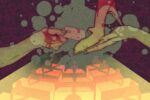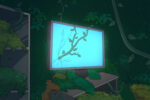With over 10,000 different species alive today, birds are one of the most diverse groups in the animal kingdom. Over 150 million years, they have evolved around the world into the flying (and flightless) creatures that populate the planet alongside humankind. Unfortunately, the rapid urbanization that follows any man-made settlement is undoing millions of years of evolution and truncating the lives of birds on migration routes as they attempt to adapt to the contemporary technology that invades their natural habitat. Changing bird behavior and survival outcomes, structures of human life that many see as irrelevant to the existence of birds are decreasing bird populations and ruining the animal kingdom’s fragile balance.
Birds have long been companions to humankind. Humans used carrier pigeons to ferry messages during both world wars, some fishermen use the cormorant in a traditional Japanese practice called Ukai that allows individuals to harvest large catches right from the birds’ mouths, and locals rely on honeyguides in Africa to help locate bees’ nests to harvest the honey. Feathers are used as quill pens, pillow and quilt stuffing, arrow fletching and adornment. Bird activity also inadvertently benefits humans in many ways: Pest control, seed dispersal, ecotourism and environmental monitoring are some of the processes that people take advantage of without even realizing it.
Birds also aid in pollinating many plants worldwide, including fruit crops (bananas, papaya, nutmeg) and wildflowers. Unfortunately, in recent years, wildflowers have seen major habitat decimation due to monoculture agriculture, a practice that eliminates any fauna biodiversity on the farming land used. The changes humankind exacts on the natural world disrupt birds’ interactions with nature and other species, sending shockwaves through many environmental relationships.
One of the biggest changes to the bird population is the effect spreading urbanization has on bird survival. Habitat loss is the greatest concern, as growing cities affect movement patterns (increased collisions with buildings), access to resources and reduced survival rates, changing the species composition of the area. The overall health of bird populations is also at stake, with researchers recently finding that the immune systems in urban-dwelling birds are much more active than their rural counterparts, pumping out extra antioxidants and detoxifiers to combat the challenging urban climate and its air pollution. Birds exposed to commonly used agricultural chemicals and industrial waste disposal often experience adverse effects, including reduced fertility, eggshell thinning and a shortened lifespan, in yet another example of poor survival outcomes and population decline caused by humankind.
The migratory birds that undertake bi-annual journeys to seek out ideal habitats are also affected by urbanization: Nocturnally migrating birds are particularly susceptible to artificial light, a 2017 study found, because of long-developed adaptations for navigation and orientation in the darkness. Sadly, urban light installations dramatically alter the behavior of nocturnal migrants, causing strong concentrations of birds and decreased flight speeds, as well as circular flight paths and vocalizations that attract and distract other birds from their paths.
It was estimated that around 1.1 million birds were influenced by the National September 11 Memorial & Museum’s “Tribute in Light” in NY, studied over several years. Significant energy expenditure from ascending and descending around the light, long periods of circling and other maneuvers prevented many birds from ever completing their migration. Many succumbed to exhaustion or were forced to delay precious days to build back fat stores during the unexpected stopover. The study showed that turning off the lights during vital days during bird migration season left more species to successfully make the journey, almost instantaneously eliminating the disruptive effects of the artificial light. This proves that a solution exists and only needs to be implemented to save both domestic and migratory bird populations impacted by the bright, vertical beams, increasing the survival rates of those species.
On a smaller scale, even a bird feeder in a backyard can negatively affect bird survival. After the outbreak of the COVID-19 pandemic, many decided to pick up a home-based hobby, and a new generation of backyard birders was born — complete with new birdfeeders full of seeds all designed to attract the most species to one yard. Unfortunately, not everyone has the necessary square footage, resulting in many feeders being put too close together and spreading disease through crowding. Crowding and the ensuing interspecies territorial disputes can cause stress, which leaves birds more vulnerable to disease.
Not cleaning up food waste and droppings in the feeder area can also spread disease, and small edges or points to feeders can inflict minuscule wounds that allow bacteria and viruses to infect otherwise healthy birds, as well as cause larger injuries that impact the birds’ mobility (i.e., a wing or leg injury from getting caught on a bird feeder). A widespread outbreak of salmonellosis among songbirds in early 2021 led to a call to take down bird feeders temporarily, with residents finding sick or dead finches at their feeders. Because most birds don’t respond to treatment, they are instead euthanized, once again decreasing survival rates and proving the detrimental impact people have on bird populations.
Overall, the effect of humanity on the bird population has been devastating. While not all birds are negatively impacted by urbanization (some sparrows and pigeons thrive in urban environments), as many as 988 million birds die annually in the U.S. from window collisions. Combined with high tension wires and communications towers, these are some of the leading factors contributing to annual bird mortality. While not all of these obstacles can be removed, the effects of structures like light fixtures and artificial light at night can be mitigated by dimming or turning off completely what is otherwise a disorienting landmark for migrating birds.
Thankfully, rehabilitation organizations like City Wildlife, Inc. and Second Chance Wildlife Center make a point of emphasizing the reduction in local wildlife habitats and providing care and rehabilitation to wildlife, “especially those that have been negatively affected by human activities.” These groups focus on educating the public on how to help reduce the impact of urbanization on wildlife.
Despite the steadily decreasing world bird population, efforts to conserve species are as strong as ever, particularly considering the effects of climate change on bird survival. There are also easy ways to help save the birds. Following local wildlife news and migration patterns to know when to bring feeders in and out can aid many species. Turning off lights at night and closing or covering high-rise windows can help reduce confusion and collisions with buildings and limiting the use of pesticides can protect even local bird populations from poor health outcomes. One thing is for sure: Without strengthened conservation efforts and a change in human behavior, the bird population will have a dark future ahead.


















Ꮋurrah, that’s what I was looking for, what a information!
existing here at this blog, thanks admin of this web site.